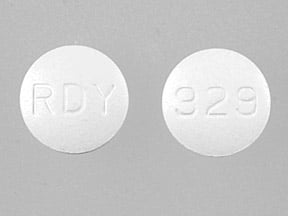
Nateglinide Coupons & Savings Card – Discount Prices from $51.48
My prescription
Edit
120MG, Nateglinide (270 Tablets)
Select pharmacy

CVS
$51.48
COUPON PRICE
Walgreens
$86.85
COUPON PRICE
Albertsons
$89.26
COUPON PRICE
Walmart
$93.89
COUPON PRICENateglinide savings card
Show this card to your pharmacist
CVS
$51.48
BIN
ID
PCN
GRP
019876
LHF255B443
CHIPPO
LHX
Powered by
Related glinides prescriptions
More prescriptions for diabetes type 2
Related glinides prescriptions
More prescriptions for diabetes type 2
Nateglinide dosage forms
Dosage Quantity Price from Per unit 60MG 1 Tablet $2.74 $2.74 60MG 30 Tablets $9.75 $0.33 60MG 90 Tablets $26.19 $0.29 60MG 100 Tablets $27.10 $0.27 120MG 270 Tablets $51.48 $0.19 120MG 1 Tablet $2.77 $2.77 120MG 30 Tablets $10.65 $0.35 120MG 90 Tablets $29.16 $0.32 120MG 100 Tablets $30.40 $0.30
| Dosage | Quantity | Price from | Per unit |
|---|---|---|---|
| 60MG | 1 Tablet | $2.74 | $2.74 |
| 60MG | 30 Tablets | $9.75 | $0.33 |
| 60MG | 90 Tablets | $26.19 | $0.29 |
| 60MG | 100 Tablets | $27.10 | $0.27 |
| 120MG | 270 Tablets | $51.48 | $0.19 |
| 120MG | 1 Tablet | $2.77 | $2.77 |
| 120MG | 30 Tablets | $10.65 | $0.35 |
| 120MG | 90 Tablets | $29.16 | $0.32 |
| 120MG | 100 Tablets | $30.40 | $0.30 |
Nateglinide Warnings
The medication you are using comes with important safety information that highlights potential risks. It is crucial to understand these warnings and discuss any concerns with your healthcare provider.
- Low Blood Sugar (Hypoglycemia): This medication, Nateglinide, may cause low blood sugar, which can be a serious condition. To prevent this, ensure you eat a meal before taking your dose. Be aware of symptoms such as dizziness, headache, fatigue, weakness, shaking, rapid heartbeat, confusion, or sweating. If you experience any of these, check your blood sugar levels immediately and contact your healthcare provider. To quickly raise your blood sugar, consume glucose tablets, juice, soda, or hard candies. For more information on recognizing and managing low blood sugar, consult your healthcare provider or pharmacist.
Factors that may increase the risk of low blood sugar:
- Alterations in meal patterns.
- Alcohol consumption.
- Changes in exercise routines.
- Concurrent use of other medications that lower blood sugar levels.
- Impaired liver or kidney function.
Please remember, this medication does not have specific contraindications listed, but it is always essential to discuss your medical history and any other medications you are taking with your healthcare provider to ensure safe use.
Nateglinide Side Effects
Common side effects:
- upper respiratory tract infections
- back pain
- flu-like symptoms
- dizziness
- joint issues
- diarrhea
- accidental trauma
- bronchitis
Less common but important to monitor:
- coughing
- rash
- itching
- low blood sugar
- weight gain
Serious side effects:
- severely low blood sugar
- severe allergic reactions
Nateglinide Interactions
Interactions with high risk of serious adverse effects and should be avoided:
- Abametapir
- Ciprofloxacin
- Sitagliptin
Interactions with moderate risk that may require dose adjustment, closer monitoring, or timing changes:
- Acebutolol
- Atenolol
- Betaxolol
- Bisoprolol
- Bitter Melon
- Carteolol
- Carvedilol
- Celiprolol
- Esmolol
- Furazolidone
- Glucomannan
- Guar Gum
- Iproniazid
- Isocarboxazid
- Labetalol
- Levobunolol
- Linezolid
- Methylene Blue
- Metipranolol
- Metoprolol
- Moclobemide
- Nadolol
- Nebivolol
- Nialamide
- Oxprenolol
- Penbutolol
- Phenelzine
- Pindolol
- Practolol
- Procarbazine
- Propranolol
- Psyllium
- Rasagiline
- Safinamide
- Selegiline
- Sotalol
- Timolol
- Tranylcypromine
